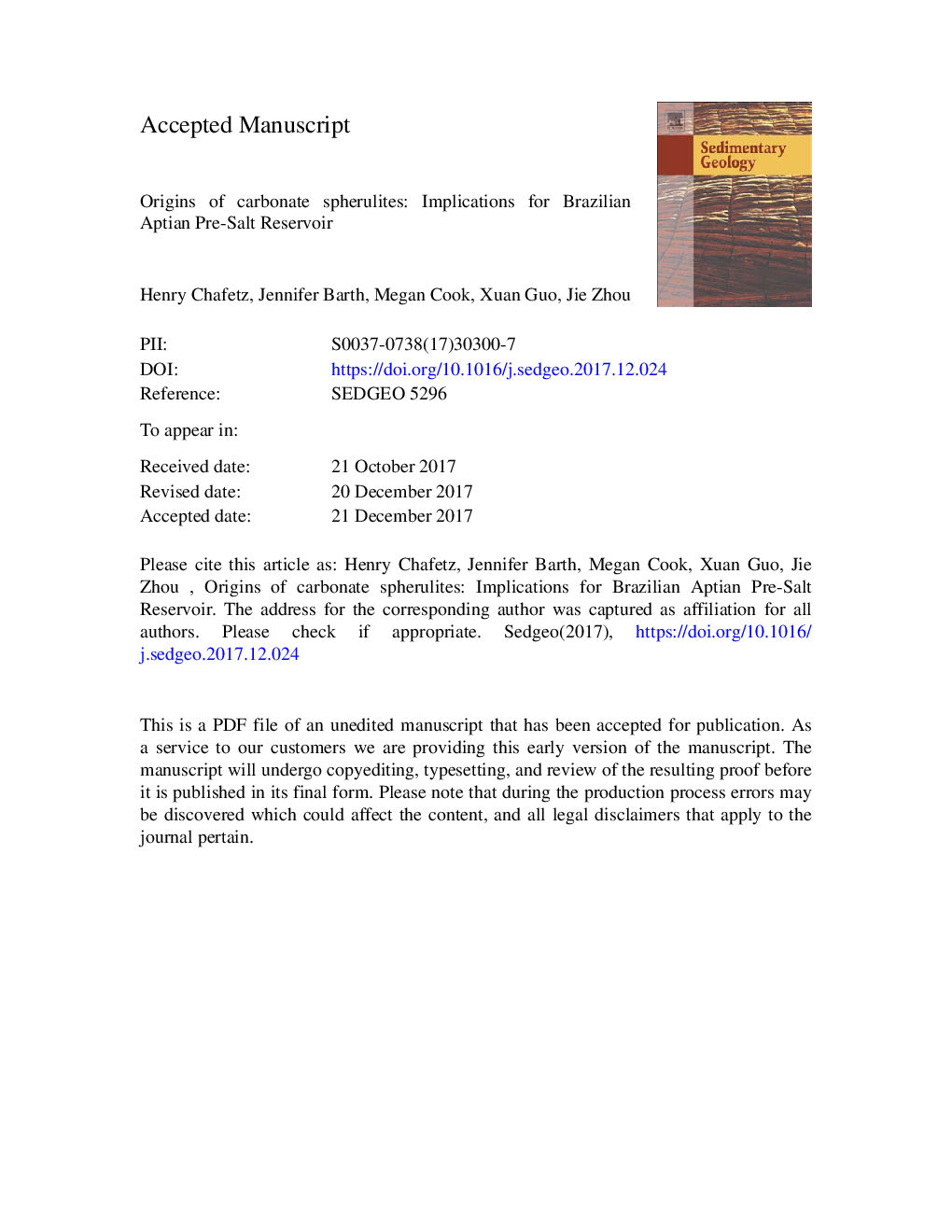| Article ID | Journal | Published Year | Pages | File Type |
|---|---|---|---|---|
| 8908536 | Sedimentary Geology | 2018 | 55 Pages |
Abstract
Spherulites, spherical to elliptical allochems composed of crystals radiating from a common core, investigated from a variety of depositional settings, e.g., hot springs, ambient water temperature geyser, tufa, and caliche, are all composed of a fine-grained nucleus made-up of carbonate encrusted bacterial bodies, biofilms, and/or EPS and surrounded by a cortex of radiating crystals of either aragonite or calcite. The microbes and their by-products in the nucleus induced the precipitation of carbonate, overcoming the inhibition to initiate crystal formation. The enveloping radiating crystals comprising aragonitic cortices tended to grow abiotically producing well-formed euhedral crystals with a paucity of included bacterial fossils. Whereas those cortical crystals made-up of calcite commonly contained bacterial fossils, indicating that the bacterial colonies contributed to the calcitic cortical crystal precipitation. Similar spherulites form a thick, widespread accumulation in the Aptian Pre-Salt lacustrine deposits in the Campos Basin, offshore Brazil. As with the travertine, tufa, and caliche spherulites, the Pre-Salt spherulites most likely initiated carbonate precipitation around bacterial colonies and/or their bioproducts, probably while afloat in a lacustrine water column before settling to the water-sediment interface. Absence of inter-spherulite sediment and the spherulite-to-spherulite compaction indicate that cortical crystal growth continued while the spherulites were at the sediment-water interface rather than displacively within a sediment.
Keywords
Related Topics
Physical Sciences and Engineering
Earth and Planetary Sciences
Earth-Surface Processes
Authors
Henry Chafetz, Jennifer Barth, Megan Cook, Xuan Guo, Jie Zhou,
